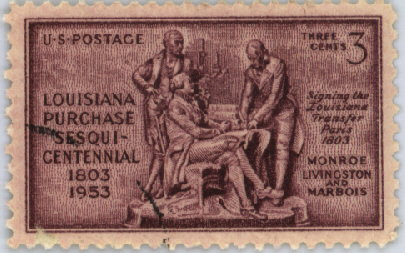Political Changes
The aforementioned Stephen Douglas's strong interest in a transcontinental railroad led him to introduce in Congress a fateful legislative act that finally destroyed the Compromise of 1850. (This was a bill that, among other things, proposed a new and more effective fugitive slave law; that the slave trade, but not slavery itself be abolished in the District of Columbia; and that in the rest of the lands acquired from Mexico, territorial governments be formed without restrictions on slavery[25].) As a senator from Illinois, a resident of Chicago, and the acknowledged leader of Northwestern Democrats, Douglas obviously wanted the transcontinental railroad for his own city and section. But he was aware of the strength of the main argument against the Northern route: that west of the Mississippi it would run mostly through country largely inhabited by Indians. As a result, he introduced a bill in January 1854 to organize (and thus open to white settlement) a huge new territory, known as Nebraska, west of Iowa and Missouri.Douglas knew the South would oppose his bill because it would lead the
 way for a new free state; the proposed territory was in the area of the Louisiana Purchase
north of the Missouri Compromise line and thus closed to slavery. In an effort to make the
measure acceptable to Southerners, Douglas added a provision that the status of slavery in
the territory would be determined by the territorial legislature - that is, according to
popular sovereignty. This meant that the region could choose to open itself to slavery, but
few believed it actually would. When Southern Democrats demanded more, Douglas agreed to two
changes in the bill. He wrote an additional clause explicitly withdrawing the antislavery
provision of the Missouri Compromise (which the popular sovereignty provision of his original
bill had done implicitly), and an adjustment creating two territories, Nebraska and Kansas,
instead of one, hence establishing a new territory (Kansas) that might become a slave state.
In its final form the measure was known as the Kansas-Nebraska Act. President Pierce supported
the bill; and after a strenuous debate, it became law in May 1854 with the unanimous support
of the South and the partial support of the Northern Democrats.
way for a new free state; the proposed territory was in the area of the Louisiana Purchase
north of the Missouri Compromise line and thus closed to slavery. In an effort to make the
measure acceptable to Southerners, Douglas added a provision that the status of slavery in
the territory would be determined by the territorial legislature - that is, according to
popular sovereignty. This meant that the region could choose to open itself to slavery, but
few believed it actually would. When Southern Democrats demanded more, Douglas agreed to two
changes in the bill. He wrote an additional clause explicitly withdrawing the antislavery
provision of the Missouri Compromise (which the popular sovereignty provision of his original
bill had done implicitly), and an adjustment creating two territories, Nebraska and Kansas,
instead of one, hence establishing a new territory (Kansas) that might become a slave state.
In its final form the measure was known as the Kansas-Nebraska Act. President Pierce supported
the bill; and after a strenuous debate, it became law in May 1854 with the unanimous support
of the South and the partial support of the Northern Democrats.
This piece of legislation produced many immediate, far-reaching changes. It destroyed the Whig party, which disappeared almost entirely by 1856. It divided the Northern Democrats (many of whom were shocked by the repeal of the Missouri Compromise, which to them was an almost sacred part of the fabric of the Union) and drove many of them from the party. Most important of all, it encouraged the creation of a new party that was openly sectional in its composition and beliefs. People in both major parties who opposed Douglas's bill began to call themselves Anti-Nebraska Democrats and Anti-Nebraska Whigs. In 1854, they formed a new organization and named it the Republican party. In the elections of that year, the republicans won enough seats in Congress to be able to organize the House of Representatives and won control of several Northern state governments[26].
